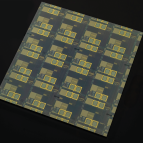Common Evaluation Platform

The Department of War (DoW) aims to use the best techniques from industry and academia to secure the hardware in its systems from compromise. But collaborating with partners from outside the U.S. government to develop, integrate, and test these techniques is challenging because the DoW must keep its system designs protected. While open-source alternative designs can allow researchers to test their new tools, these platforms do not exhibit the scale, complexity, or functionality of real DoW hardware.
Inspired by real DoW mission systems and integrated entirely out of open-source components, our Common Evaluation Platform (CEP) addresses these problems by offering both realism and accessibility. The CEP is a system on a chip (a chip onto which all electronics of a computer are integrated) design that is representative of typical DoW microelectronics. Using the CEP, industry and academic collaborators can design security mechanisms to prevent, deter, or detect DoW hardware threats. The design of the CEP includes instrumentation and government-specific benchmarks across four security categories:
- Design integrity, or how well the government could detect if malicious functionality was hidden into a design
- Design confidentiality, or how resistant a design is to reverse engineering
- Data confidentiality, or whether secret information could be extracted from unintended emissions such as electromagnetic, acoustic, or power signals
- Device integrity, or how well the government could detect counterfeit or unauthentic parts
The platform is entirely open-source and available for download on GitHub.




